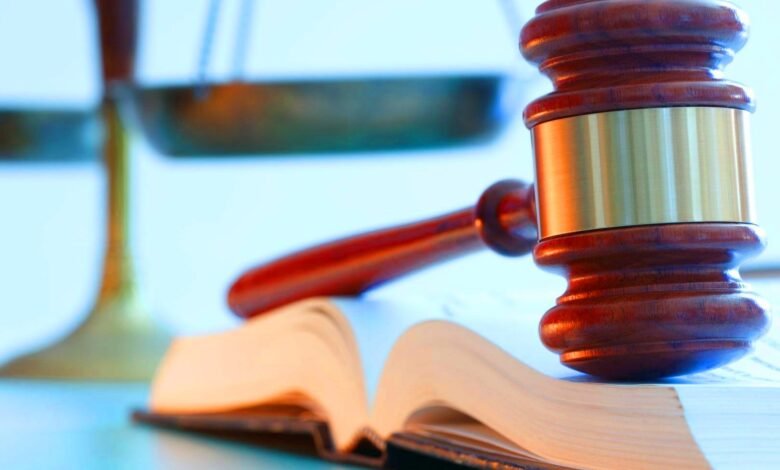Criminal Law Essentials: A Practical Guide for Law Students and Practitioners

“Criminal Law Essentials: A Practical Guide for Law Students and Practitioners.” In the dynamic landscape of legal practice, understanding the fundamentals of criminal law is paramount for both aspiring lawyers and seasoned practitioners. This comprehensive guide delves into the core principles, procedures, and complexities of criminal law, offering invaluable insights and practical knowledge essential for navigating the intricate realms of criminal litigation and justice administration.
Whether you’re a law student embarking on your academic journey or a legal professional seeking to enhance your expertise, this guide serves as an indispensable resource for comprehending the nuances and intricacies of criminal law in practice. Join us as we explore the foundational concepts, emerging trends, ethical considerations, and real-world case studies that shape the landscape of criminal law today.
The Importance of Criminal Law in Society
Criminal law plays a crucial role in maintaining social order and ensuring justice. It serves as a deterrent against unlawful behavior, provides redress to victims, and upholds the fundamental principles of fairness and equality before the law. Without effective criminal laws, society would descend into chaos, with individuals free to engage in harmful conduct without consequence.
Understanding Criminal Acts
In criminal law, offenses are categorized into various types, including misdemeanors and felonies. Misdemeanors are less serious offenses, such as petty theft or disorderly conduct, punishable by fines or short-term imprisonment. Felonies, on the other hand, are more severe crimes, such as murder or robbery, punishable by imprisonment for one year or more.
Each offense consists of specific elements that must be proven beyond a reasonable doubt to establish guilt. These elements typically include an actus reus (the guilty act) and a mens rea (the guilty mind). For example, in a murder case, the actus reus would be the killing of another person, while the mens rea would be the intent to cause death or serious bodily harm.
The Role of Intent in Criminal Law
Intent, or mens rea, is a critical element in determining criminal liability. It refers to the mental state of the accused at the time of committing the offense and can range from intentional conduct to reckless disregard for the consequences of one’s actions. The presence or absence of intent can significantly impact the outcome of a criminal case and the severity of the punishment imposed.
Criminal Liability: Parties Involved
Criminal liability can extend beyond the primary perpetrator to include accomplices, accessories, and individuals who aid or abet the commission of a crime. Each party’s level of culpability may vary based on their role and intent. For example, an accessory before the fact is someone who aids or encourages the commission of a crime but is not present at the scene, while an accomplice is someone who actively participates in the commission of the crime.
Defenses in Criminal Law
Defendants in criminal cases may assert various defenses to challenge their culpability, including justifications and excuses. Justifications focus on the legality of the defendant’s actions, arguing that they were justified under the circumstances. Common justifications include self-defense, defense of others, and necessity. Excuses, on the other hand, involve factors that mitigate the defendant’s responsibility, such as insanity, intoxication, or duress.
Read More: Crimes and Punishments: Exploring the Dynamics of Criminal Law
Criminal Procedure: From Investigation to Trial
The criminal justice system follows a structured process from the initial investigation through to trial and sentencing. Each phase involves distinct procedures designed to safeguard the rights of the accused and ensure a fair and impartial adjudication.
- Investigation Phase: The investigation phase begins with the gathering of evidence by law enforcement authorities. This may include collecting physical evidence, interviewing witnesses, and conducting forensic analysis. The goal of the investigation is to gather sufficient evidence to establish probable cause for the arrest of the suspect.
- Charging Phase: Once the investigation is complete, the prosecutor reviews the evidence and decides whether to file formal charges against the defendant. This decision is based on the strength of the evidence and the likelihood of securing a conviction at trial. If charges are filed, the defendant is formally arraigned and informed of the charges against them.
- Trial Phase: The trial phase involves presenting the case before a judge or jury, who will determine the defendant’s guilt or innocence. Both the prosecution and the defense have the opportunity to present evidence, call witnesses, and make legal arguments. The burden of proof rests with the prosecution, who must prove the defendant’s guilt beyond a reasonable doubt.
Sentencing and Punishment
Upon conviction, offenders may face various forms of punishment, including fines, probation, imprisonment, or even capital punishment. Sentencing decisions take into account the severity of the offense, the defendant’s criminal history, and mitigating factors such as remorse or cooperation with law enforcement. The goal of sentencing is to achieve justice by imposing a punishment that is proportionate to the severity of the crime and the defendant’s level of culpability.
Emerging Trends in Criminal Law
Advancements in technology have given rise to new forms of criminal activity, such as cybercrime and identity theft. These offenses pose unique challenges for law enforcement authorities, who must adapt their investigative techniques to keep pace with rapidly evolving technology. Additionally, the intersection of mental health and criminal responsibility presents complex challenges for legal practitioners and policymakers. Defendants with mental illnesses may lack the capacity to form criminal intent or understand the consequences of their actions, raising questions about their culpability and appropriate treatment within the criminal justice system.
Challenges and Ethical Considerations
Criminal law practitioners must navigate ethical dilemmas while upholding their professional obligations. Balancing zealous advocacy with ethical constraints ensures the integrity of the legal profession and promotes public trust in the justice system. Ethical considerations may arise in various contexts, such as plea bargaining, witness representation, or the disclosure of confidential information. By adhering to ethical standards, attorneys can uphold the principles of justice and protect the rights of their clients while maintaining the integrity of the legal system.
Case Studies in Criminal Law
Examining real-world case studies offers valuable insights into the application of legal principles and the complexities of criminal litigation. Landmark cases serve as precedents for future legal decisions and provide a framework for understanding the nuances of criminal law in practice. For example, the landmark case of Miranda v. Arizona established the requirement for law enforcement officers to inform suspects of their rights before conducting custodial interrogations, ensuring the protection of defendants’ Fifth Amendment rights against self-incrimination.
Resources for Further Learning
Law students and practitioners can access a wealth of resources to deepen their understanding of criminal law, including textbooks, scholarly articles, online courses, and professional organizations dedicated to criminal justice. Legal research databases such as Westlaw and LexisNexis provide access to case law, statutes, and legal commentary, enabling students and practitioners to stay abreast of developments in the field. Additionally, participating in moot court competitions, internships, or externships can provide practical experience and insight into the day-to-day practice of criminal law.
Read More: Criminal Law and Ethics: Navigating Moral Dilemmas in Legal Practice
Conclusion
Criminal law serves as a cornerstone of the legal system, addressing societal concerns about unlawful conduct while safeguarding individual rights. By mastering the essentials of criminal law, law students and practitioners can navigate complex legal landscapes and contribute to the administration of justice. As society evolves and new challenges emerge, the principles of criminal law remain essential for upholding the rule of law and protecting the rights of all individuals.
FAQs(Criminal Law Essentials)
What is the difference between a misdemeanor and a felony?
A misdemeanor is a less serious offense, while a felony is a more severe crime punishable by imprisonment for one year or more.
Can a defendant be convicted of a crime without intent?
Yes, in certain cases, strict liability offenses do not require proof of intent for conviction.
What are some common defenses in criminal cases?
Common defenses include self-defense, alibi, insanity, and entrapment.
How do sentencing guidelines vary across different jurisdictions?
Sentencing guidelines vary based on the severity of the offense, the defendant’s criminal history, and jurisdictional laws.
Are there any recent developments in criminal law reform?
Recent reforms focus on issues such as bail reform, sentencing disparities, and juvenile justice reform.











